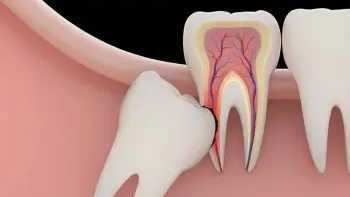
What is Toothceded Tooth Extraction?
With advancements in dental science and technology, the priority is to treat and preserve the natural tooth in the mouth. Tooth extraction involves removing the tooth from its socket in the bone. It is typically resorted to when treatment is no longer possible.
What are Wisdom Teeth?
Wisdom teeth, or third molars, are expected to erupt between the ages of 17 and 26.
Do Wisdom Teeth Always Need to Be Removed?
If your wisdom teeth are properly positioned and healthy, they do not need to be removed. However, they may be extracted to create space for orthodontic treatment if necessary.
What is Impacted Tooth Extraction?
Impacted tooth extraction is often performed due to issues with wisdom teeth. Unlike our ancestors, who needed these back teeth for tougher diets, modern softer diets have led to smaller jaws, leaving less room for wisdom teeth. These teeth struggle to find space, often pushing against adjacent teeth and causing crowding. Their position at the back of the mouth can disrupt normal gum anatomy, leading to easy inflammation.
What is the Difference Between Impacted Tooth Extraction and Regular Tooth Extraction?
Impacted tooth extraction, typically for wisdom teeth, involves surgically removing a tooth from beneath the gum tissue, while regular tooth extraction involves removing a visible, damaged, or untreatable tooth.
Which Department Performs Tooth Extraction?
Tooth extraction and impacted tooth extraction are performed by oral and maxillofacial surgeons within the field of dentistry.
Why is Tooth Extraction Needed?
Is Tooth Extraction Painful?
Tooth extraction is performed under anesthesia, so you won’t feel pain during the procedure. Some mild pain may occur afterward, but it can be managed with painkillers.
Will There Be Swelling After Extraction?
Swelling, or edema in the cheek, varies depending on the tooth’s position and the individual. To minimize swelling, apply a cold compress to the cheek area for the first 24 hours. Mild swelling is normal and necessary for healing.
How is Tooth Extraction Performed?
Despite common fears, tooth extraction is a simple procedure performed under local anesthesia. The dentist first examines the patient’s overall health and dental condition. X-rays are used to assess the tooth’s shape, length, position, and surrounding bone and soft tissue. Under local anesthesia, the area is numbed, the tooth is loosened with an elevator, and extracted using dental forceps. In some cases, bone reshaping may be necessary depending on the situation.